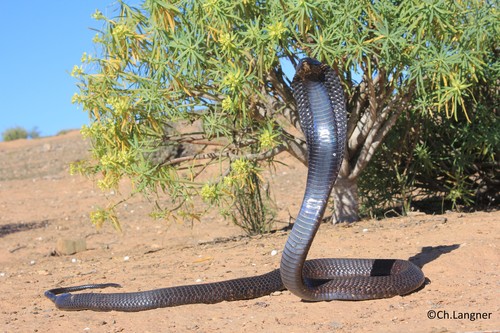
Egyptian Cobra
Naja haje, the Egyptian cobra, is a majestic serpent of African landscapes. Known for its iconic hood and potent venom, it plays a crucial role in controlling rodent populations. This enigmatic snake, with its powerful presence, is both feared and revered across its native range.
20-30 years
Lifespan
9.072 kg
Weight
Length: 2.4384 m
Size
Least Concern
Conservation Status
Decreasing
Population Trend
Characteristics
The Egyptian cobra (Naja haje) is a large, venomous snake native to Africa, found in savannas, semi-deserts, and near water bodies. It has a distinctive hood, smooth scales, and a head that is wider than its neck. It preys on small mammals, birds, and other reptiles, using its potent neurotoxic venom to subdue them. The species is known for its defensive posture, including spreading its hood and hissing loudly when threatened.
Distribution Range of the Egyptian Cobra
The Naja haje, commonly known as the Egyptian cobra, is native to North and Northeast Africa. Its geographical distribution includes countries such as Egypt, Libya, Sudan, South Sudan, Eritrea, Ethiopia, Somalia, Chad, Niger, and parts of Cameroon and Nigeria. It is also found in the Arabian Peninsula, particularly in regions of Saudi Arabia and Yemen.
Egyptian Cobra's Habitat
Environmental Conditions
The Egyptian cobra inhabits a variety of environmental conditions, primarily preferring arid and semi-arid regions. It is commonly found in deserts, savannas, and sparse shrublands, as well as near water sources like oases and riverbanks. The climate in its native range is typically characterized by hot temperatures and low precipitation.
Ecological Niche
As a terrestrial species, the Egyptian cobra primarily occupies ground-level habitats but is also known to climb trees or enter abandoned burrows. It plays a crucial role in controlling rodent populations, as rodents are a primary component of its diet. This snake is adaptable and can sometimes be found in agricultural areas, where it may come into contact with humans.
Copyright @ Nature Style Limited. All Rights Reserved.
 English
English